(Written by William)
Making LEGO mosaics is not a new concept. In fact, LEGO fans have been designing and building them for as long as small LEGO tiles, bricks, and plates have been available. And LEGO’s own designers have been making large LEGO mosaics for public events. The main deterrent for more people to get into mosaic building has been that getting large quantities of those small pieces can get quite expensive.
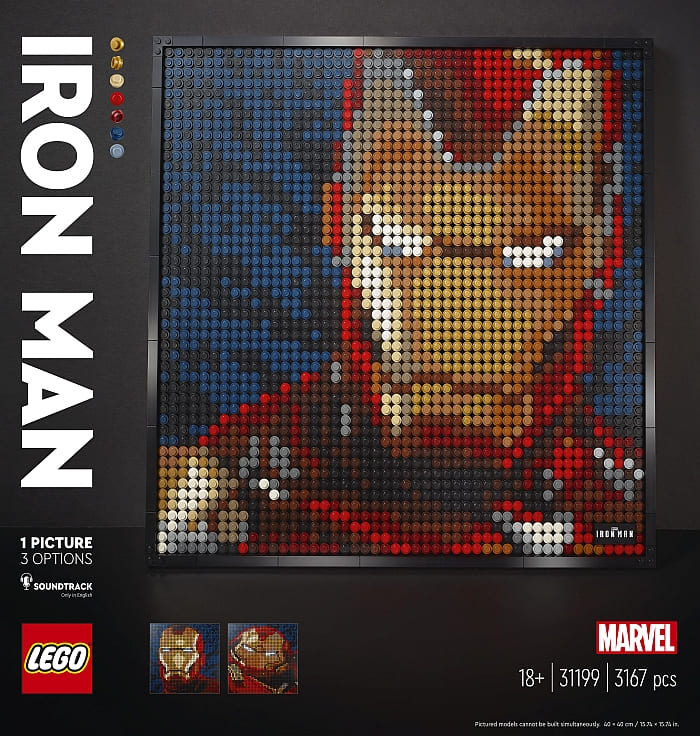
Thankfully, LEGO is introducing us to an updated form of mosaic making with the new LEGO Art line. Unfortunately, the price of these sets is a little high at $120, but I really wanted to review the #31199 LEGO Art Marvel Studios Iron Man and look at the building techniques, new parts, and overall experience.
So are the LEGO Art sets worth the price? Based on my experience with the #31199 LEGO Art Marvel Studios Iron Man set, my answer would be “yes”. First of all, every set in the LEGO Art collection gives you options for several different builds. Additionally, if you really want to get into mosaic building, you are even given the option to combine multiples of the same set together to create a much larger design. I am really considering buying more copies of Iron Man to do just that.
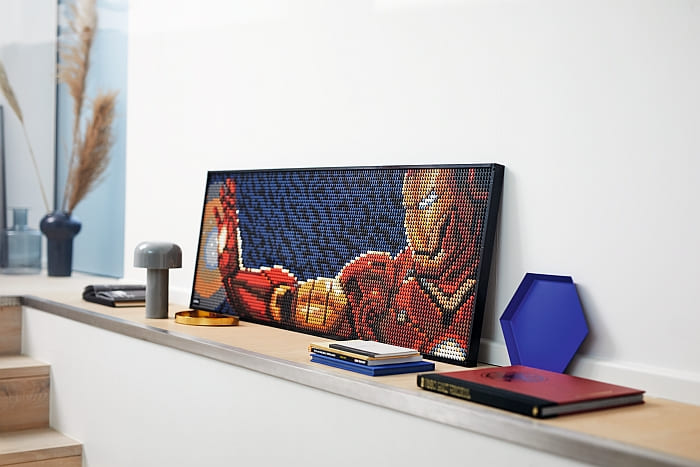
Since this is such a high-end and classy set, I created a video just to show you what it looks like to open the box, and in the second video, I share some of my overall thoughts about the set. Then, in the text below, we will discuss about some of the finer techniques this set has to offer. I know these sets might be a tough sell for seasoned mosaic builders, but I think there are some interesting features on offer here that are worth considering. And I will also touch on some of the basics of mosaic building at the end of this article. So let’s jump right in!
LEGO ART MOSAICS – COLOR BLENDING
With all the currently available colors in LEGO’s library, the fact remains that the color palette is still limited. Let’s look at gray as an example. There is a light and dark version in both the old style and the more modern bluish tint. Then we have a couple of shades of pearly and flat silvers and we could even add in chrome-silver. That’s not even close to making up the entire gray color spectrum, and as I mentioned above, getting these colors in sufficient quantities might be tricky. Fortunately, getting more shades of gray is mostly unnecessary.
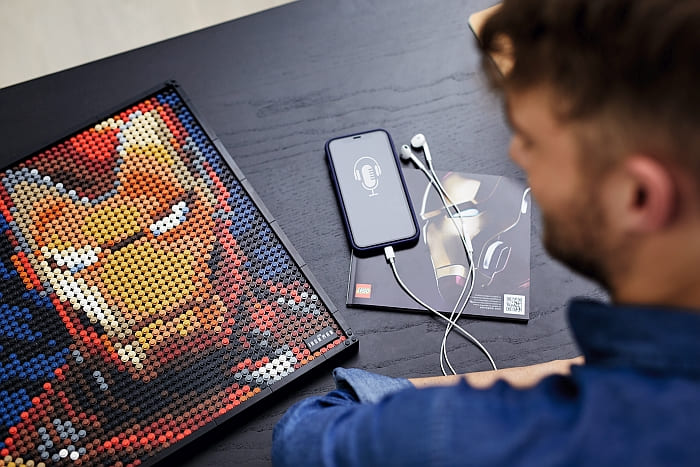
Thanks to how our brains work, we tend to interpret colors by the context that they are in. Put another way, if you take a teal piece and put it next to a lot of blue, the blue qualities will stand out. Vice versa, if we put that same piece next to green, then the green qualities will stand out. It’s still the same piece, but our brains categorize like things together when possible. This comes in very handy when trying to build a mosaic. By grouping colors that are similar to each other, we can convince ourselves that there is more color than actually exists. Our brains do all the transitioning and fading for us.
The best way to use this knowledge is to direct it. Color can be directed in a couple of ways. Either you have a distinct main color that draws the eye, and puts that color in the forefront of your mind. Or you use colors that share a family group of colors. For the Iron Man mosaic, looking at the initial design, pearl gold is a dominant color and the red family is also used. This gives us the iconic gold and red of Iron Man’s helmet.
However, depending on how people perceive color, you can have some people saying, “Man, there’s a lot of brown in that mosaic”. And they aren’t wrong. Having color blindness can mean certain colors are harder to make out. And if they don’t pick up on the dominant color or color family then the image will get skewed.
Fortunately, the feature that usually comes across is the shade of the colors, and this is really where your color blending skills really pays off. Whether you are dealing with shadows or a shimmering surface, you can get across a sense of dimension in your piece. The Iron Man mosaic deals with both shadow and shine, so you can see how these techniques work.
In the #31199 LEGO Art Marvel Studios Iron Man mosaic you get fifteen colors to work with, and you don’t even use all of them in the three different mosaics you can build. So quite a lot can be done with rather little.
LEGO ART MOSAICS- BACKDROP
One issue mosaic builders have to deal with is that using standard LEGO baseplates had its problems. Baseplates only come in a few colors, and unless you want that exact color as a backdrop, you have to cover it all up. Baseplates also has a tendency to flex, and they are hard to attach to a wall. You could alter them, but many LEGO fans don’t feel comfortable cutting and gluing LEGO.
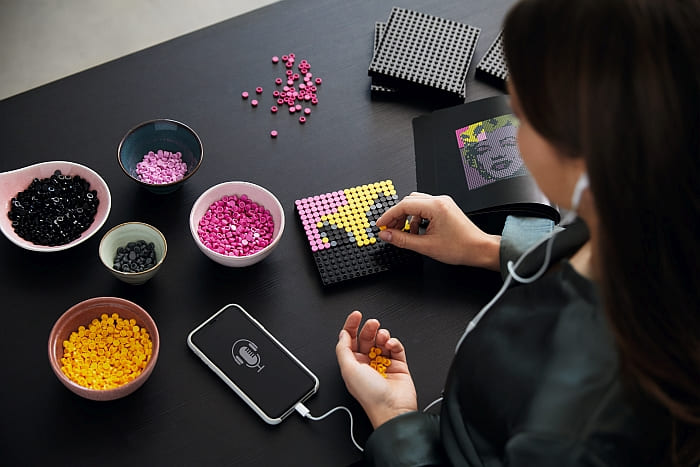
LEGO solved all of these issues with a single solution; a brand new 16×16 canvas panel in black. The panels are as thick as a standard LEGO brick and feature pin-holes along their four edges so you can connect multiples of them. The panels create a very secure and sturdy canvas for mosaic building and display. And to make them even more secure, once you assemble your picture, a frame is built around the whole mosaic for additional stability.
And because the color of the panels is black, you can build on them without fear of odd colors showing through. Additionally, the black canvas makes the round plates used in this mosaic to pop with full color by giving them an optimum level of contrast. Think of it as a sort of back lighting, as it enhances what’s in front of it.
In short, while colored baseplates can be used as backdrops for LEGO mosaics (especially when you use translucent mosaic pieces), they can also be trouble when you want to hide their color. Here, LEGO is using a system where the backdrop is plain black and does not add or distract from the actual picture. In addition, the backdrop doubles as a very secure mounting and framing system. It will be interesting to see if LEGO fans who regularly make mosaics will adopt this system.
LEGO ART MOSAICS – SQUARE VS. ROUND PLATES
Round plates are a more viable option when working with a black backdrop for more than one reason. So, what else do they offer besides making the colors pop? For one, you don’t have to square them up. The fact alone that square plates require precise alignment means I’ll probably avoid ever making a mosaic with them. Being round means, no matter how round plates are oriented, you’ll get the same look.
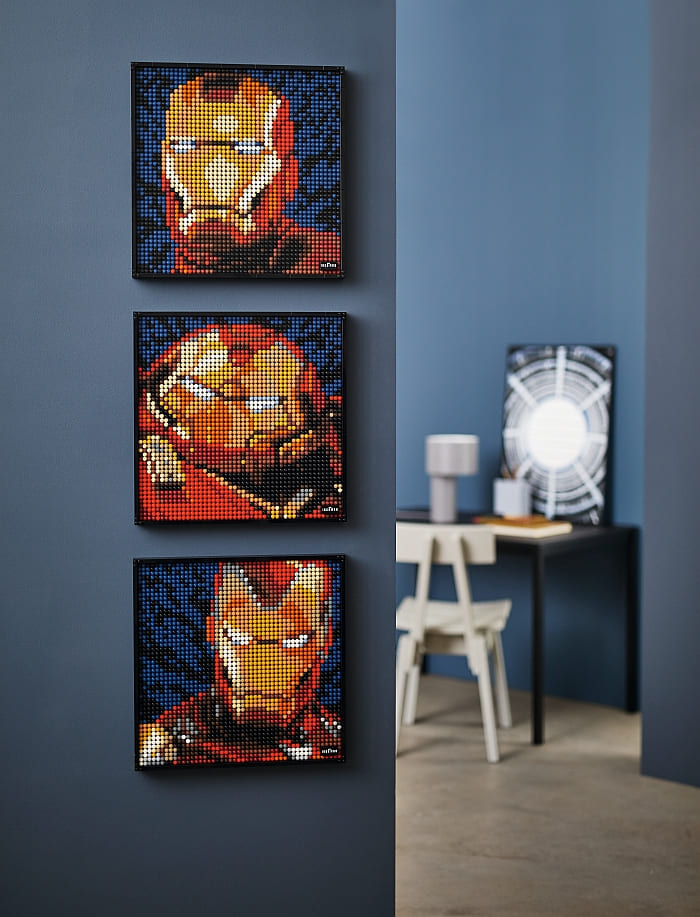
Another key difference is sharp vs. soft lines. Square plates have edges. This gives each pixel a more fully saturated color and a sharper edge. The rounded plates, in contrast, soften lines by adding a bit of undulating across their edges. Which method to use will depend on your project and your artistic preference. Personally, I like the softer lines provided by the round plates. This especially works well for sections of the mosaic that are meant to be curved. Of course, if the goal of your mosaic is to recreate 8-bit art, then the square plates are your best choice. They will maintain the limited structure that makes 8-bit art iconic.
Ultimately, your choice may come down to the backdrop you have to work with and the accessibility of the pieces. If you’re dealing with a bright-green baseplate, chances are you don’t want any of that showing through. That’s where square plates will have you covered. But if you have the option of a nice black canvas, it’s hard to compare with the realism round plates can generate. And for the truly ambitious, there’s nothing saying you can’t mix square and round plates, or even add in some differently shaped tiles!
LEGO ART MOSAICS – THE BASICS OF MOSAIC BUILDING
After trying out one of the LEGO Art mosaics, you may want to build your own design. But where to start? First, you find a picture you want to recreate. It can be your own drawing, a famous painting, or a photo of something or someone. Generally, builders will use a program to render out an image in the proper format. A great program for this is PicToBrick. It presents a number of options you can tweak to make sure your creation looks right.
Another factor to consider is the size of what you build. The larger the canvas size, the better it will look. However, the down side is that the price increases exponentially as you increase your canvas size. This brings us to our next issue, sourcing parts.
Third-party sellers like the ones you find on BrickLink has been the go-to place for LEGO mosaic builders. However, the LEGO Art line is starting to give us a new option. Four sets are available right now (two with round plates and two with round tiles, and more sets are on the way. They are not cheap, but you do get the new canvas system to easily build, frame, and hang your mosaics, as well as enough plates or tiles to build impressive designs. This might be the easiest way to get started, if you are new to mosaic building and you don’t already have a large selection of pieces at your disposal.
Finally, remember to restrict your color palette (you can do this in PicToBrick). You can pixelize any image you want but that doesn’t mean LEGO will have the exact color of some of the pixels you’ve rendered. As pointed out before, blending your colors can work around this limitation, but you need to tell the program to only use certain colors.
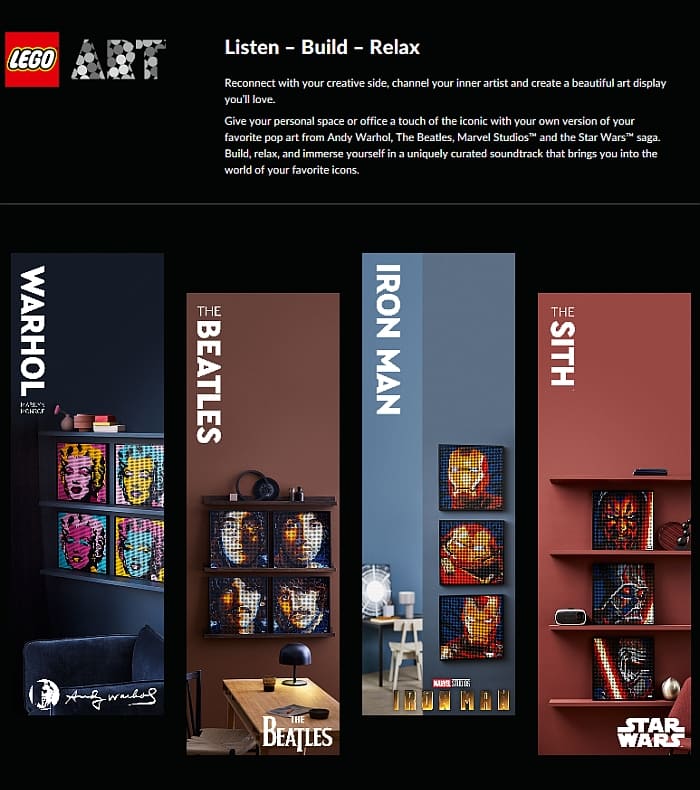
As I mentioned before, I really feel you get your money’s worth out of these new LEGO Art sets. If you check out the unboxing video I posted at the beginning, you can even see the effort that was made in the presentation of how the set is packed. And in the other video, I mention the design options that exist in the set right out of the box. On the whole, it might be too expensive to get every set in the line, but it is definitely a good thing to check out if you like the image that is recreated! All four of the currently available LEGO Art sets can be purchased at the LEGO Art section of the Online LEGO Shop.

What do you think? Have you ever built a LEGO mosaic? What do you think of the new LEGO Art mosaic system? And how do you like the techniques discussed here? Do you have any of the sets already, or are you planning to get them? Feel free to share your thoughts and discuss in the comment section below!
And you might also like to check out the following related posts:












I was wondering why they used studs instead of regular plates, but you explained it well. I haven’t thought of those reasons at all!
I wonder why they decided to use studs on some of the mosaics and smooth tiles on others. What effect or technique would that be?
The color blending you mentioned. How do you achieve that? Is there like a ratio of what you can get away with to fool the eyes to blend colors?
I guess you can just do every second plate in a different color, and similar. Try to do an image search on +EGA +graphics +dithering, and scrutinize the images and techniques.
Okay, I’m reading the text a bit more carefully now. I guess the general idea is that similar colors together would create smooth gradients, and very different colors would create bigger contrasts to allow the main sections of the image to stand out more. Roughly like that.
(Such as the lighter red colors around the edges of Iron Man’s head making it stand out against the general black and dark blue background.)
There’s a general color theory applicable for all visual arts, that could be studied…
https://en.wikipedia.org/wiki/Color_theory
I do wonder if they will continue using only black, or use other colors for backgrounds. There is a Harry Potter mosaic and a Disney mosaic coming next year.
Haha. It’s so true what you said about lining up tiles. Nope. Just nope. 😀
What about those of us who are OCD and want to align all the Lego logos the same way? For us, plates are the better choice, or smooth tiles.
The thing about using round plates and tiles is that you can’t create 3D mosaics as easily as with square plates. With regular plates, you can add additional layers of plates to deepen the image. This is especially effective with clear plates.
Great analysis of mosaic building! Building a mosaic is on my LEGO bucket list, and these are some helpful tips. The subject matter of these official mosaics doesn’t interest me, but I am pretty tempted to try using one as a starter kit!